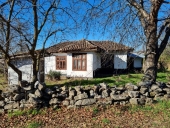I've been thinking on this for a little while and I was hoping to get some thoughts and advice from people on the situation.
I'm currently living on the Delmarva Peninsula, which is a microclimate in Zone 6b/7a depending on the year. We have fairly mild (40s mostly) winters with occasional hard and prolonged freezes, although these two past years have been balmy and mild (50s and 60s, thanks climate change) with very random hard freezes. The summers are hot with very very high humidity because the Chesapeake Bay is to the west. Average summer temps are 80s with night temps in the 60s and 70s. Most of the time, the humidity begins at 100% in the mornings and drops to 50% over the course of the day. Rain is pretty average all year round. There's a lot of wind here. Elevation is at most, 20 feet above sea level. The frost free dates are generally April 15 to Nov 1.
I'm living and gardening down here while I pay off my student loans and save up money. In around five years, I'll be moving back up to my parents farm, to live and work on theirs, and start my own little farm. They live in northeastern PA, mountainous area, zone 5b, 1000 ft above sea level or more depending on what part of the farm. The ground freezes solid all winter, with snow cover half the time. Frost free dates are May 15 to Oct 7. Summers are average with humidity increasing when a storm system moves through, but dropping back down after. Some hot days in summer but average is in the 70s. Night summer temps are 50s. Rain is pretty average here as well.
I'm going to be seed saving and doing plant adaptation in my garden here in Maryland and I had been thinking about using the STUN method. But with a move only a short (relatively) time away, I'm not necessarily sure I should with the different climate. The soil here in Maryland is a sandy loan, while PA land is channery loam on a slope. My primary crop focus for adaptation is corn (flour and flint), tomatoes, beans, peppers, peas. I might just end up saving seeds to build up a stock so when I move I have a lot of seeds for the large (relatively) amount of land I'll have available.
Thoughts, advice? Most of what I'm doing right now is learning how to grow a bunch of different crops on a tiny scale (300 sq feet plus containers), to see if I like them or can grow them when I get more land. Grains especially! And learning to save seed and make
compost right now.
This is my first post but I've been lurking for a couple of months now. This forum is great!

 3
3






































 3
3













